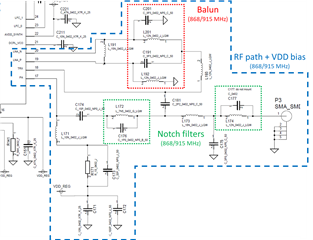Other Parts Discussed in Thread: , , , CC1120EMK-420-470
Tool/software:
I am currently working with CC1125 transceiver chip for my project. The chip is matched for UHF frequency band and I wanted to calibrate the registers of the chip through my microcntroller. I wanted to check the transmission as well as reception. The transmission is working perfectly. We were able to send the data with 465 MHz through our actual board and receive it in the CC1125 Eval board through smart RF. Next we needed to do receiver sensitivity test. For that, initially, I tried sending the data through CC1125 EVM with 465 MHz and 15 dbm transmit power and receive it through the CC1125 chip which is connected in my actaul board. It is working fine. But, when I tested the reception for low transmit power, by keeping attenuators in between, I am not able to receive the packets with power less than -30 db. When I checked the marcstate, it is showing settling state. Why is this happening? Is it due to the matching cirucit issue in my board or is it because the EVM is matched to 868 MHz or should I need to take care of any register configurations so as to increase the sensitivity of the chip?
Any particular register involved in increasing the sensitivity of the chip? Right now, I am following the smartRF log.


